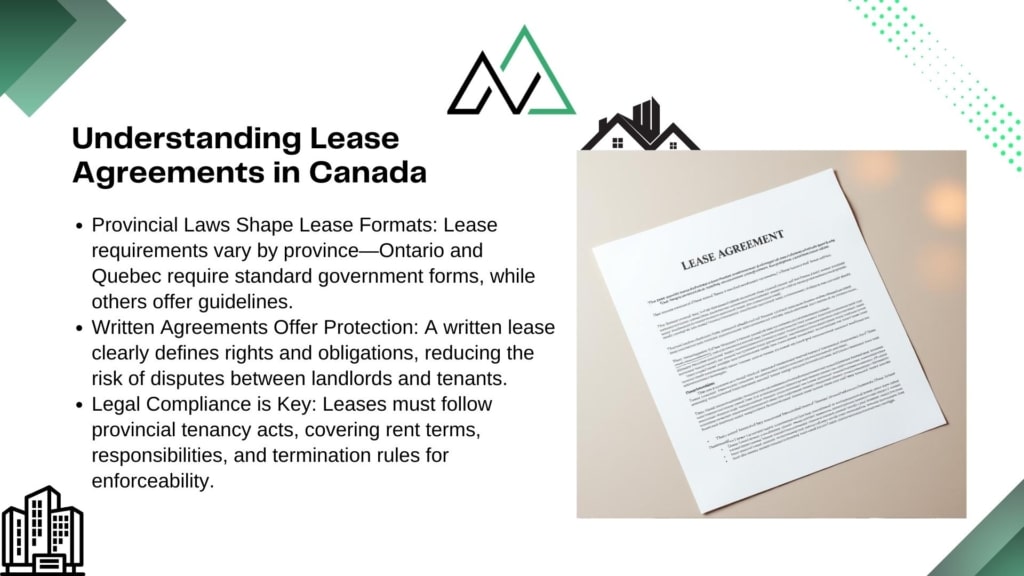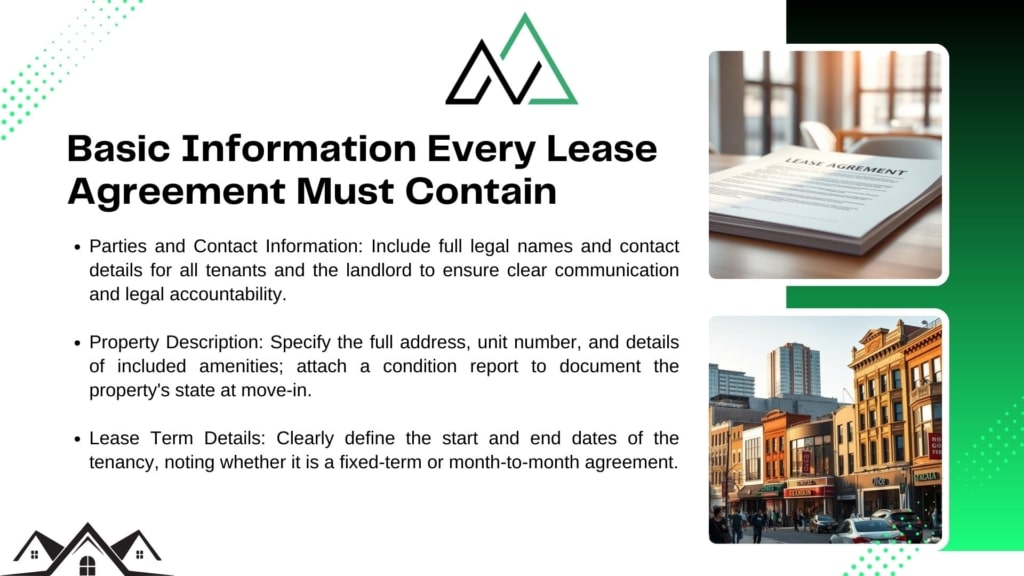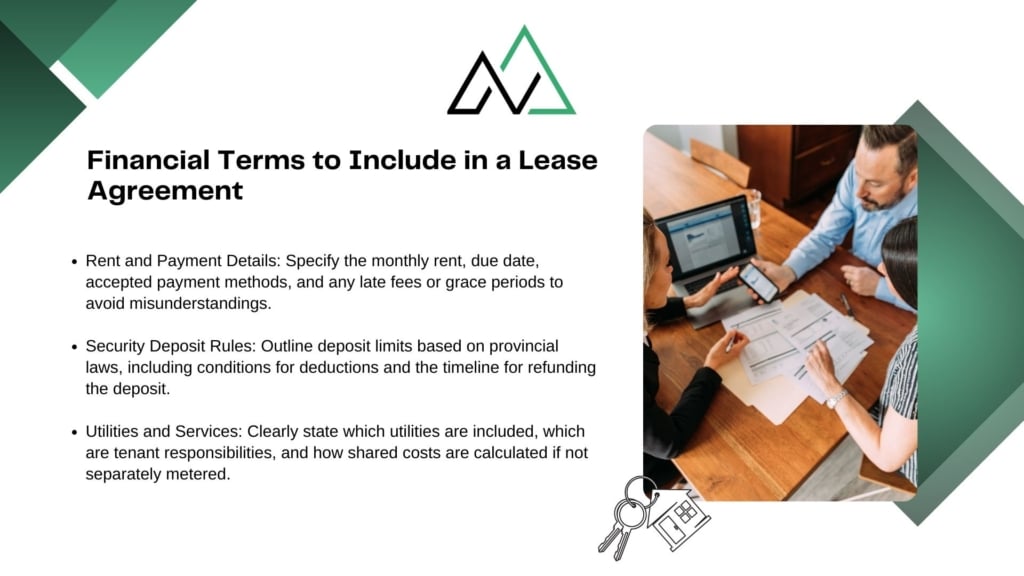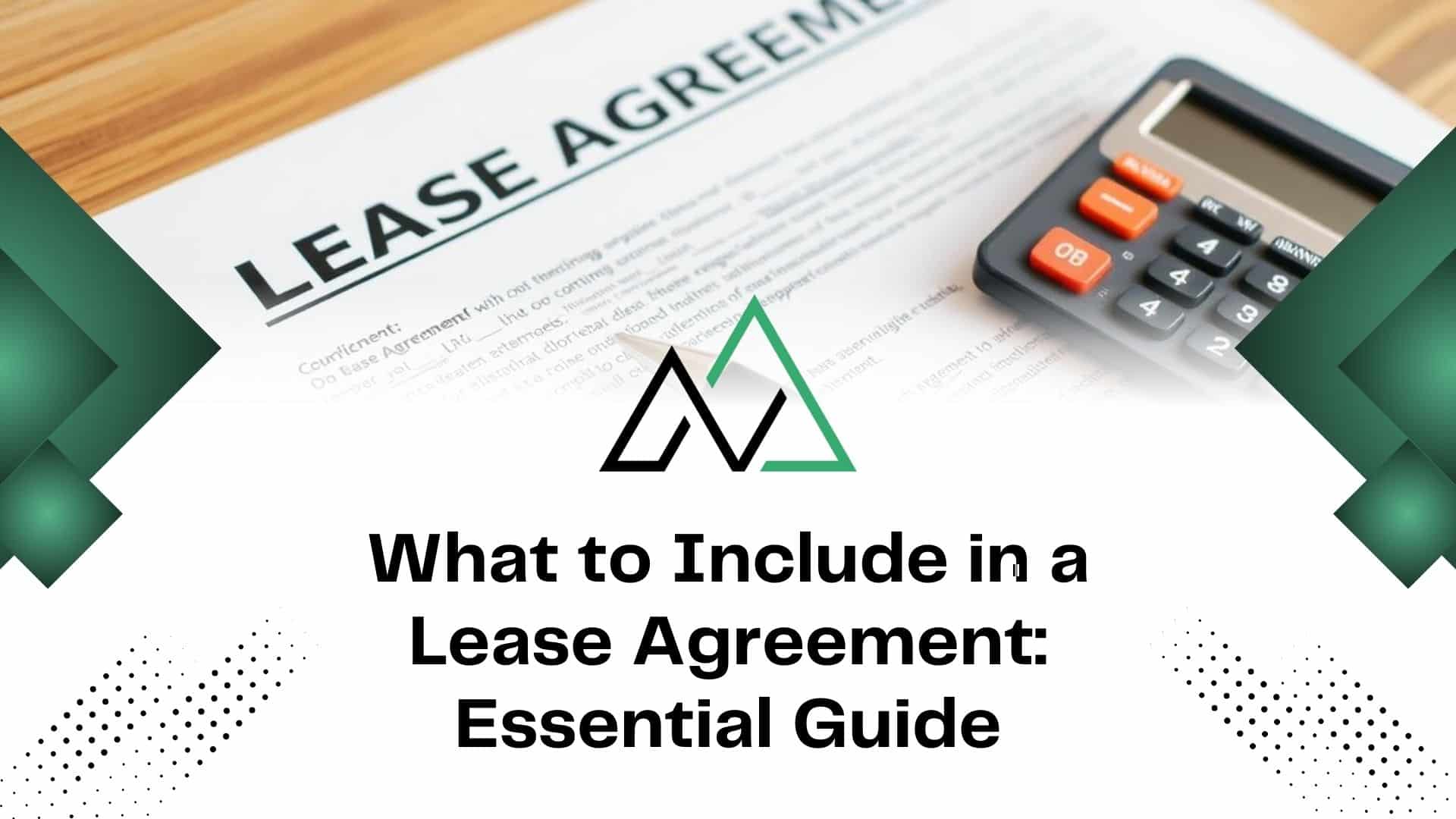A well-crafted lease agreement is crucial for a successful landlord-tenant relationship. It outlines the terms and responsibilities of both parties, helping to prevent misunderstandings and potential legal issues.
In Canada, provincial regulations affect what must be included in a lease contract. New Homes Alberta recommends understanding local requirements to ensure compliance. A comprehensive lease document protects both the landlord’s and tenant’s rights, providing clarity on expectations and procedures.
For personalized assistance with creating a lease agreement tailored to your specific situation, contact New Homes Alberta at (403)305-9167.
Key Takeaways
- A comprehensive lease agreement is essential for a successful landlord-tenant relationship.
- Understanding local regulations is crucial for compliance.
- A well-crafted lease agreement protects both parties’ rights and responsibilities.
- Clear expectations and procedures help prevent misunderstandings.
- Personalized assistance is available from New Homes Alberta.
Understanding Lease Agreements in Canada

Understanding the intricacies of lease agreements is crucial for both landlords and tenants in Canada’s diverse housing market. A lease agreement serves as a legally binding contract that outlines the terms and conditions of renting a property.
Legal Definition and Purpose
A lease agreement in Canada is defined as a contract between a landlord (lessor) and a tenant (lessee) that grants the tenant the right to use and occupy a property in exchange for payment. The primary purpose of this agreement is to clearly define the rights and responsibilities of both parties, thereby preventing potential disputes.
Lease agreements must comply with provincial residential tenancy acts, which provide baseline protections for both landlords and tenants. While oral agreements may be legally binding in some circumstances, written lease agreements are strongly recommended to provide clear evidence of terms in case of disputes.
Provincial Variations in Lease Requirements
Provincial legislation significantly impacts lease requirements across Canada. For instance, Ontario requires the use of a Standard Form of Lease for residential tenancies, while Quebec mandates that all new leases use the government’s standard lease form.
| Province | Lease Requirements |
|---|---|
| Ontario | Standard Form of Lease required for residential tenancies |
| Quebec | Government’s standard lease form mandatory for new leases |
| British Columbia | Standard forms available as guides for landlords and tenants |
Understanding these provincial variations is crucial for creating an enforceable lease agreement that protects the interests of both landlords and tenants.
Basic Information Every Lease Agreement Must Contain

The foundation of any rental arrangement is a well-structured lease agreement that contains essential details. A comprehensive lease serves as a legally binding contract between the landlord and tenant, outlining the terms and responsibilities of both parties.
Names and Contact Information of All Parties
Every lease agreement must begin with the complete identification of all parties involved, including their full legal names and current contact information. This clarity helps prevent potential disputes by establishing clear lines of communication. When multiple tenants occupy the property, all adult occupants should be named on the lease to establish joint responsibility.
Property Details and Address
The lease must comprehensively document the property details, including the full address, unit number (if applicable), and a thorough description of the rental space. This includes any storage areas, parking spaces, or amenities provided.
New Homes Alberta recommends including an inventory or condition report as an attachment to the lease to document the property’s condition at move-in.
Term and Duration of Tenancy
The term and duration section must clearly state when the tenancy begins and ends, whether it’s a fixed-term lease or a month-to-month arrangement. New Homes Alberta suggests including specific language about what happens when the initial lease term expires, such as whether it converts to month-to-month or requires renewal. For assistance with creating a comprehensive lease agreement, contact New Homes Alberta at (403)305-9167.
Financial Terms to Include in a Lease Agreement

Clearly defined financial terms in a lease agreement protect the interests of both landlords and tenants. A comprehensive financial section ensures that all parties understand their obligations and responsibilities.
Rent Amount and Payment Schedule
The financial terms section of a lease agreement must clearly state the exact rent amount, when it’s due, acceptable payment methods, and consequences for late payments, including any grace periods and late fees. For instance, specifying that rent is due on the 1st of each month and outlining the acceptable payment methods (e.g., bank transfer, check) helps prevent confusion.
Security Deposits and Limitations
Security deposit requirements vary significantly by province. In Ontario, for example, landlords can only collect a last month’s rent deposit, not a separate security deposit. The lease must detail the purpose of the deposit, conditions for its return, allowable deductions, and the timeframe for returning it after tenancy ends.
Utilities and Service Responsibilities
Utility responsibilities should be explicitly outlined in the lease, specifying which services the landlord will provide and which the tenant must establish and pay for directly. For shared utilities that aren’t separately metered, the lease should explain how costs will be calculated and billed to ensure transparency and prevent disputes.
By including these financial terms, lease agreements can minimize potential conflicts and ensure a smooth landlord-tenant relationship. It’s also essential to address whether post-dated checks are required, if electronic payments are accepted, and where/how payments should be submitted.
Essential Clauses for Landlord Protection
To safeguard their property and financial well-being, landlords should incorporate essential clauses into their lease agreements. These clauses protect the landlord’s interests and ensure a smooth tenancy.
Joint and Several Liability
A joint and several liability clause is crucial as it holds all tenants responsible for the full rent amount. This means that if one tenant fails to pay their share, the others are liable for the entire amount, protecting the landlord from potential losses.
Property Access and Inspection Rights
Clearly defining the circumstances under which a landlord can enter the property is vital. This includes repairs, emergencies, and showings to prospective tenants, typically requiring a 24-hour notice period except in emergencies.
Maintenance Responsibilities
Outlining maintenance responsibilities is essential to avoid disputes. The lease should specify what the landlord will maintain versus tenant obligations, including routine upkeep and major repairs, along with the timeframe for addressing issues.
Early Termination Conditions
Early termination conditions protect landlords by specifying circumstances under which they can end the tenancy before the lease term expires, such as non-payment of rent, illegal activities, or significant property damage.
Additional clauses that can protect landlords include severability clauses, property use restrictions, and clauses addressing tenant alterations to the property. Including specific language about tenant insurance requirements can also protect the landlord’s property and limit liability.
Important Clauses for Tenant Protection
To ensure a harmonious landlord-tenant relationship, it’s essential to include protective clauses for tenants in the lease. These clauses not only safeguard tenants’ rights but also outline the responsibilities of both parties, creating a balanced and fair agreement.
Privacy Rights
Tenants have the right to privacy in their rental property. A privacy rights clause should specify the notice period required for landlord entry, typically 24 hours, except in emergencies. This clause protects tenants from unreasonable disturbances and ensures they feel secure in their home.
Repairs and Maintenance Obligations
The lease should clearly outline the landlord’s responsibility for maintaining the property in a habitable condition. This includes timelines for addressing repair requests and procedures for reporting maintenance issues. By specifying these obligations, tenants can ensure their living environment is safe and well-maintained.
Rent Increase Limitations
To protect tenants from sudden or excessive rent increases, the lease should reference provincial guidelines governing rent adjustments. This includes the maximum allowable percentage increase, frequency limitations, and required notice periods, typically 90 days. Such a clause provides stability and predictability for tenants.
Lease Renewal Terms
A lease renewal clause protects tenants by establishing clear procedures for renewing the lease. This includes the notice period required from either party regarding their intention to renew or terminate the lease. By specifying these terms, tenants can plan for the future with greater certainty.
Additional Provisions to Consider
When drafting a lease agreement, it’s crucial to consider additional provisions that can impact the landlord-tenant relationship. These clauses can help clarify responsibilities and expectations, reducing the risk of disputes.
Pet Policies
Pet policies should clearly outline whether pets are allowed, any restrictions on type, breed, size, or number of animals, and additional pet deposits or fees required. Tenants are typically responsible for pet waste, noise, and damages caused by their pets. For instance, a pet deposit may be required to cover potential damages.
Smoking Regulations
Smoking regulations have become increasingly important in lease agreements. Landlords can choose to prohibit smoking entirely on the property or designate specific smoking areas. This clause helps maintain a healthy environment for tenants and reduces the risk of fire damages.
Parking Arrangements
Parking arrangements should detail the number and location of parking spaces included with the rental. Landlords can assign specific parking spots or implement a first-come-first-served policy. Guest parking policies and any additional fees for parking privileges should also be outlined.
Subletting and Assignment Rules
Subletting and assignment rules outline whether and under what conditions tenants may sublet the property or assign their lease to another party. This includes application procedures and landlord approval requirements, ensuring that landlords maintain control over who resides in their property.
By including these additional provisions, landlords can create a comprehensive lease agreement that addresses various scenarios, protecting both their interests and those of their tenants.
Conclusion
A carefully draftedlease agreementis the cornerstone of a positive landlord-tenant relationship.
It clearly defines the rights and responsibilities of both parties, preventing misunderstandings and disputes. New Homes Alberta recommends having your lease reviewed by a legal professional to ensure compliance with provincial regulations.
By investing time in developing a thorough lease agreement, landlords and tenants can benefit from a clear understanding of their obligations, from maintenance responsibilities to early termination conditions.
For personalized assistance with creating or reviewing a lease document, contact New Homes Alberta at (403)305-9167.
FAQ
What is the purpose of a security deposit in a lease agreement?
A security deposit serves as a form of protection for landlords against potential damages or unpaid rent. The amount is typically refundable, provided the tenant fulfills their obligations under the lease.
How much notice is required to terminate a lease?
The notice period varies depending on the jurisdiction and the terms of the lease. Typically, landlords and tenants must provide a minimum of 30 to 60 days’ notice before terminating the lease.
Can a landlord increase rent during the lease term?
Rent increase regulations differ by province or state. Generally, landlords can raise rent after providing proper notice, usually 60 to 90 days in advance, and must comply with local rent control laws.
What are the responsibilities of landlords regarding property maintenance?
Landlords are typically responsible for maintaining the property’s structure, ensuring compliance with health and safety codes, and performing necessary repairs. Tenants are usually responsible for minor maintenance and upkeep.
Can a tenant sublet the rental property?
Subletting rules vary depending on the lease agreement and local laws. Tenants may need to obtain the landlord’s consent before subletting the property, and the landlord may have the right to refuse or approve the sublet.
What happens if a tenant damages the rental property?
If a tenant causes damage to the property, they may be held responsible for the repairs. The security deposit can be used to cover the cost of damages, and the landlord may also pursue additional compensation if necessary.
Are there any specific rules for having pets in a rental property?
Pet policies vary depending on the landlord and the lease agreement. Some landlords may allow pets, while others may have a no-pets policy or require additional pet deposits.
How are utilities and services typically handled in a lease agreement?
The lease agreement should specify which utilities and services are included in the rent and which are the tenant’s responsibility. This can include electricity, water, gas, internet, and other services.





